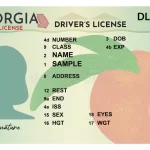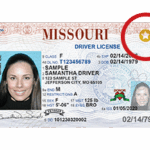Diving Deep into the World of Salvage Title Cars: Risks, Rewards, and Responsible Buying

The allure of a drastically reduced price tag can often lead car buyers down unconventional paths. One such path leads to the realm of salvage title vehicles. These cars, once deemed irreparable and destined for the scrap heap, are brought back to life, offering a tempting alternative to pricier, conventionally titled vehicles. However, navigating the salvage title market requires careful research, a healthy dose of skepticism, and a thorough understanding of the potential pitfalls lurking beneath the surface.
This comprehensive guide will delve into the world of salvage title cars for sale, exploring the intricacies of how a car earns this designation, the potential benefits and drawbacks of ownership, the inspection and repair process required for retitling, and ultimately, offer advice on how to responsibly navigate this complex landscape to determine if buying a salvage title car is the right decision for you.
What Exactly is a Salvage Title?
A salvage title is a legal document issued by a state’s Department of Motor Vehicles (DMV) or equivalent agency, indicating that a vehicle has been damaged to the point where the cost of repairs exceeds a certain percentage of its market value. This percentage varies by state, but often hovers around 75-90%. The primary reason for issuing a salvage title is to protect consumers from unknowingly purchasing a severely damaged vehicle with undisclosed issues.
Common causes for a salvage title include:
- Accidents: Significant collisions resulting in frame damage, extensive body work, or deployment of airbags can lead to a salvage title.
- Flooding: Vehicles submerged in floodwaters are highly susceptible to electrical damage, corrosion, and mold growth, often exceeding the repair threshold.
- Theft: While seemingly counterintuitive, stolen vehicles that are recovered stripped of parts or damaged during the theft can also be issued a salvage title.
- Hail Damage: Severe hailstorms can cause widespread denting and structural damage, leading insurance companies to deem the vehicle a total loss.
- Fire: Vehicles that have been involved in fires, even if the damage appears localized, often suffer from extensive smoke damage, melted wiring, and compromised structural integrity.
It’s crucial to understand that a salvage title doesn’t necessarily mean the car is beyond repair. It simply signifies that the insurance company or a qualified appraiser determined the cost of repairs was too high to be economically justifiable. The vehicle might still be drivable, but it carries a significant risk of hidden issues and potential safety hazards.
The Appeal of Salvage Title Cars: Why Consider One?
The primary allure of salvage title cars is undoubtedly the price. These vehicles are typically sold at a significant discount compared to their counterparts with clean titles. This price reduction can be substantial, potentially saving you thousands of dollars.
- Significant Cost Savings: The most compelling reason to consider a salvage title car is the potential for significant savings. You can often purchase a vehicle for a fraction of its clean-title value. This can be particularly appealing if you’re on a tight budget or looking for a project car.
- Opportunity for Skilled DIYers: If you possess the necessary mechanical skills and knowledge, buying a salvage title car can be a rewarding DIY project. You can repair the vehicle yourself, potentially saving even more money and customizing it to your exact specifications.
- Source of Affordable Parts: Even if you don’t intend to fully restore the vehicle, purchasing a salvage title car can be a cost-effective way to acquire hard-to-find or expensive parts for another vehicle you own.
- Potential for Reselling (with Disclosure): After meticulous repairs and a successful inspection, a salvage title car can be retitled as “rebuilt” or “reconditioned” (depending on state regulations). While its value will still be lower than a clean-title car, you may be able to resell it with full disclosure, potentially recouping your investment and turning a profit.
The Dark Side of Salvage Titles: Potential Risks and Drawbacks
While the prospect of a bargain is tempting, it’s essential to acknowledge the inherent risks associated with buying a salvage title car. These risks can range from minor inconveniences to potentially life-threatening safety hazards.
- Hidden Damage: The most significant risk is the potential for hidden damage that may not be immediately apparent. This could include structural damage to the frame, electrical problems, or mechanical issues that can surface months or even years after purchase.
- Safety Concerns: Depending on the extent of the damage and the quality of the repairs, a salvage title car may not be as safe as a vehicle with a clean title. Compromised structural integrity, malfunctioning airbags, or faulty brakes can significantly increase the risk of injury in an accident.
- Difficulty Obtaining Insurance: Some insurance companies are hesitant to insure salvage title cars, or they may offer limited coverage at a higher premium. This is due to the increased risk associated with these vehicles.
- Reduced Resale Value: Even after being rebuilt and retitled, a salvage title car will always have a lower resale value than a comparable vehicle with a clean title. This is because potential buyers are often wary of the unknown history and potential issues associated with salvage vehicles.
- Challenges with Financing: Securing a loan for a salvage title car can be challenging. Many lenders are reluctant to finance these vehicles due to the increased risk of depreciation and potential for mechanical problems.
- Varying State Regulations: Regulations regarding salvage title vehicles vary significantly from state to state. Some states have stricter inspection requirements than others, and some states may even prohibit the titling or registration of certain salvage vehicles.
- Title Washing: Be wary of “title washing,” a fraudulent practice where unscrupulous individuals attempt to conceal a vehicle’s salvage history by retitling it in a state with less stringent regulations. This can leave unsuspecting buyers with a car that has serious, undisclosed problems.
- Unreliable Repair History: Often, the repair history of a salvage title car is incomplete or non-existent. This makes it difficult to assess the quality of the repairs and identify potential problems.
The Road to Retitling: Inspection and Repair Requirements
Before a salvage title car can be legally driven on public roads, it typically needs to undergo a thorough inspection and be retitled as either “rebuilt” or “reconditioned.” The specific requirements vary depending on state regulations, but generally involve the following steps:
- Repair the Vehicle: Address all identified damage according to state regulations and industry standards. This may involve replacing damaged parts, repairing body panels, and ensuring all safety systems are functioning correctly. It’s crucial to keep detailed records of all repairs, including receipts for parts and labor.
- Salvage Inspection: Schedule an inspection with a state-certified inspector. The inspector will verify that the repairs were completed correctly, that the vehicle meets all safety standards, and that there are no outstanding recalls or other issues.
- Documentation and Paperwork: Gather all necessary documentation, including the original salvage title, receipts for repairs, inspection reports, and any other documents required by your state’s DMV.
- Application for Rebuilt Title: Submit an application to your state’s DMV for a rebuilt or reconditioned title. This application will typically require the documents mentioned above, as well as payment of applicable fees.
- Vehicle Identification Number (VIN) Verification: Some states may require a separate VIN verification to ensure the vehicle’s identity hasn’t been altered or tampered with.
Important Considerations During the Repair Process:
- Use Quality Parts: Don’t cut corners by using cheap or substandard parts. Invest in quality components that meet or exceed OEM (Original Equipment Manufacturer) specifications. This will ensure the vehicle’s safety and reliability.
- Follow Proper Repair Procedures: Adhere to established repair procedures and industry best practices. Don’t attempt to “wing it” or take shortcuts. This could compromise the vehicle’s structural integrity and safety.
- Address Hidden Damage: Be prepared to address hidden damage that may not be immediately apparent. This could involve further inspections and repairs, potentially increasing the overall cost of the project.
- Document Everything: Keep meticulous records of all repairs, including dates, descriptions of work performed, part numbers, and costs. This documentation will be essential for the salvage inspection and retitling process.
- Consider Professional Assistance: If you lack the necessary skills or experience, consider seeking professional assistance from a qualified mechanic or body shop. This can help ensure the repairs are completed correctly and safely.
Before You Buy: A Comprehensive Checklist for Evaluating a Salvage Title Car
Before committing to the purchase of a salvage title car, conduct a thorough evaluation to assess its condition and identify any potential problems. This checklist will help you make an informed decision:
- Review the Vehicle History Report: Obtain a comprehensive vehicle history report from a reputable provider like Carfax or AutoCheck. This report will reveal the vehicle’s accident history, title history, and any reported damage. Pay close attention to the reason for the salvage title and the extent of the damage.
- Thorough Visual Inspection: Conduct a thorough visual inspection of the vehicle, both inside and out. Look for signs of damage, such as mismatched paint, uneven panel gaps, rust, or corrosion. Pay particular attention to the frame, suspension, and engine compartment.
- Mechanical Inspection: If possible, have the vehicle inspected by a qualified mechanic. The mechanic can perform a comprehensive mechanical inspection to identify any potential problems with the engine, transmission, brakes, steering, and other critical systems.
- Frame Inspection: If the vehicle has been involved in a collision, it’s crucial to have the frame inspected for damage. Frame damage can compromise the vehicle’s structural integrity and make it unsafe to drive.
- Electrical System Inspection: Flooded vehicles are particularly susceptible to electrical damage. Have the electrical system inspected for corrosion, shorts, and faulty wiring.
- Test Drive: If the vehicle is drivable, take it for a test drive. Pay attention to how the vehicle handles, accelerates, and brakes. Listen for any unusual noises or vibrations.
- Title Verification: Verify the authenticity of the salvage title with your state’s DMV. This will help you avoid purchasing a vehicle with a fraudulent title.
- Research State Regulations: Familiarize yourself with your state’s regulations regarding salvage title vehicles. This will help you understand the inspection and retitling process and ensure that you comply with all applicable laws.
- Negotiate the Price: Based on your evaluation, negotiate the price with the seller. Be realistic about the potential costs of repairs and factor those costs into your offer.
- Consider the “Total Cost of Ownership”: Don’t just focus on the initial purchase price. Factor in the cost of repairs, insurance, taxes, and registration fees. This will give you a more accurate picture of the total cost of ownership.
Red Flags to Watch Out For:
- Unwillingness to Provide Documentation: If the seller is reluctant to provide you with a vehicle history report, repair records, or other documentation, this is a major red flag.
- Pressure to Buy Quickly: Don’t feel pressured to make a quick decision. Take your time to thoroughly evaluate the vehicle and conduct your research.
- Suspiciously Low Price: If the price seems too good to be true, it probably is. Be wary of deals that seem significantly lower than the market value for similar vehicles.
- Lack of Transparency: If the seller is evasive or unwilling to answer your questions, this is a sign that they may be hiding something.
- Mismatched VIN Numbers: Check the VIN on the vehicle against the VIN number on the title. If they don’t match, the vehicle may be stolen or have a fraudulent title.
Is Buying a Salvage Title Car Right for You?
Ultimately, the decision of whether or not to buy a salvage title car depends on your circumstances, risk tolerance, and mechanical aptitude. Consider the following factors:
- Your Budget: Can you afford the initial purchase price, as well as the cost of repairs, insurance, and other expenses?
- Your Mechanical Skills: Do you have the necessary skills and knowledge to perform the repairs yourself, or will you need to hire a professional?
- Your Tolerance for Risk: Are you comfortable with the potential risks and uncertainties associated with owning a salvage title car?
- Your Transportation Needs: Do you need a reliable vehicle for daily commuting, or are you looking for a project car for occasional use?
- Your Resale Expectations: Are you planning to keep the vehicle for a long time, or do you intend to resell it in the future?
In Conclusion:
Buying a salvage title car can be a rewarding experience, but it’s not for everyone. It requires careful research, a thorough evaluation, and a willingness to accept the potential risks. By understanding the intricacies of the salvage title market and following the advice outlined in this guide, you can make an informed decision and potentially save a significant amount of money on your next vehicle. However, remember to prioritize safety, transparency, and due diligence throughout the process. Only then can you confidently navigate the world of salvage title cars and determine if it’s the right path for you.















